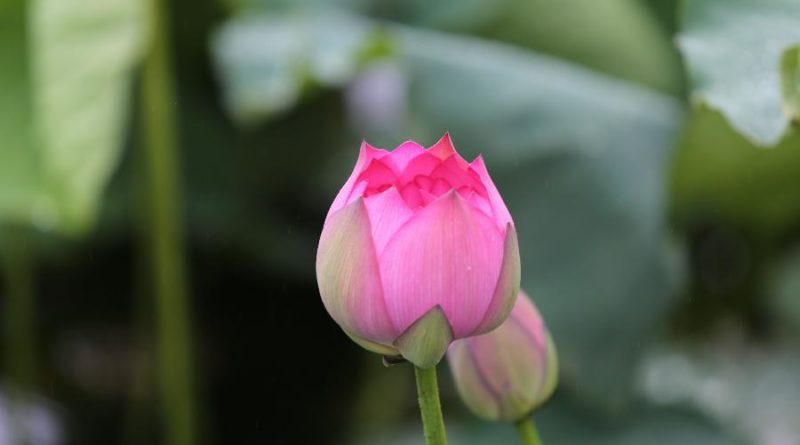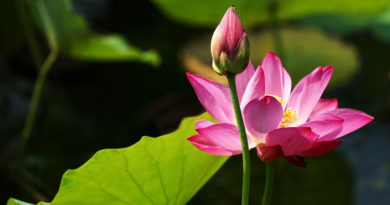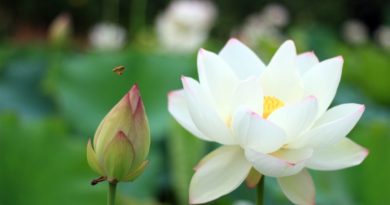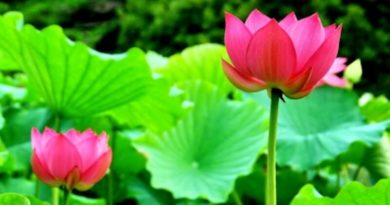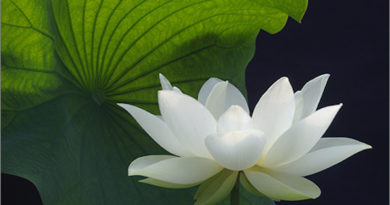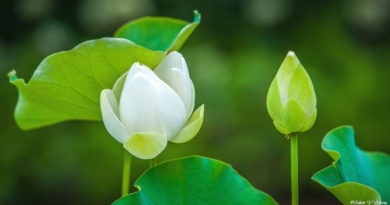The Mahavamsa – Chapter 29: The Beginning Of The Great Thupa (eng)
THE MAHAVAMSA – CHAPTER 29: THE BEGINNING OF THE GREAT THUPA
WHEN the wherewithal to build was thus brought together he began the work of the Great Thupa on the full-moon day of the month Vesakha, when the Visakha-constellation had appeared. When he had ordered to take away the stone pillar the lord of the land had the place for the thüpa dug out to a depth of seven to make it firm in every way. Round stones that he commanded his soldiers to bring hither did he cause to be broken with hammers, and then did he, having knowledge of the right and the wrong ways, command that the crushed stone, to make the ground firmer, be stamped down by great elephants whose feet were bound with leather.
The fine clay that is to be found on the spot, for ever moist, where the heavenly Ganga falls down (upon the earth ) (on a space) thirty yojanas around, is called because of its fineness, ‘butter-clay.’ Samaneras who had overcome the asavas, brought the clay hither from that place. The king commanded that the clay be spread over the layer of stones and that bricks then be laid over the clay, over these a rough cement and over this cinnabar, and over this a network of iron, and over this sweet-scented marumba that was brought by the samaneras from the Himalaya. Over this did the lord of the land command them to lay mountain-crystal. Over the layer of mountain-crystal he had stones spread; everywhere throughout the work did the clay called butter-clay serve (as cement). With resin of the kapittha -tree,’ dissolved in sweetened water, the lord of chariots laid over the stones a sheet of copper eight inches thick, and over this, with arsenic dissolved in sesamum-oil, (he laid) a sheet of silver seven inches thick.
When the king, glad at heart, had thus had preparation made upon the spot where the Great Thüpa was to be built, he arranged, on the fourteenth day of the bright half of the month Asalha, an assembly of the brotherhood of the bhikkhus, and spoke thus: ‘To-morrow, venerable sirs, I shall lay the foundation-stone of the Great Cetiya. Then let our whole brotherhood assemble here, to the end that a festival may be held for the Buddha, mindful of the weal of the people; and let the people in festal array, with fragrant flowers and so forth, come to-morrow to the place where the Great Thupa will be built.’
He entrusted ministers with the adorning of the place of the cetiya. Commanded by the lord of men, they, filled with deep reverence for the Sage (Buddha), adorned the place in manifold ways. The whole city also and the streets leading thither did the king command to be adorned in manifold ways. On the following morning he placed at the four gates of the city many barbers and servants for the bath and for cutting the-hair, clothes likewise and fragrant flowers and sweet foods (did) the king (place there) for his people’s good, he who rejoiced in the people’s welfare. Taking, according to their wish, the things thus put before them, townsfolk and country-people went to the place of the thüpa.
The king supported, in order of their rank, by many ministers, richly clothed as befitted their office, surrounded by many dancers richly clothed like to celestial nymphs, (be himself) being clad in his state-raiment, attended by forty thousand men, while around him crashed the music (he being) glorious as the king of the gods; in the evening he who had knowledge of fit and unfit places went to the place of the Great Thupa, delighting the people (with the sight). A thousand and eight waggon-loads of clothes rolled in bundles did the king place in the midst, and on the four sides he had clothes heaped up in abundance; and moreover he had honey, clarified butter, sugar and so forth set (there) for the festival.
From various (foreign) countries also did many bhikkhus come hither; what need to speak of the coming of the brotherhood living here upon the island? With eighty thousand bhikkhus from the region of Rajagaha came the thera Indagutta, the head of a great school. From Isipatana came the great thera Dhammasena with twelve thousand bhikkhus to the place of the cetiya.
With sixty thousand bhikkhus came hither the great thera Piyadassi from the Jetarama-vihara. From the Mahavana (monastery) in Vesali came the thera Urubuddharakkhita with eighteen thousand bhikkhus. From the Ghositarama in Kosambi came the thera Urudbammarakkhita with thirty ‘thousand bhikkhus. From the Dakkhinagiri in Ujjeni came the thera Urusamgharakkhita with forty thousand ascetics.
With a hundred and sixty thousand bhikkhus came the thera named Mittinna from the Asokarama in Pupphapura. From the Kasmira country came the thera Utinna bringing with him two hundred and eighty thousand bhikkhus. The wise Mahadeva came from Pallavabhogga with four hundred and sixty thousand bhikkhus, and from Alasanda the city of the Yonas came the thera Yonamahadhammarakkhita with thirty thousand bhikkhus. From his dwelling by the road through the Vinjha forest mountains, came the thera Uttara with sixty thousand bhikkhus.
The great thera Cittagutta came hither from the Bodhimanda-vihara with thirty thousand bhikkhus. The great thera Candagutta came hither from the Vanavasa country with eighty thousand ascetics. The great thera Suriyagutta came from the great Kelasa-vihara with ninety-six thousand bhikkhus. As for the number of the bhikkhus dwelling in the island who met together from every side, no strict account has been handed down by the ancients. Among all these bhikkhus who were met in that assembly those alone who had overcome the äsavas, as it is told, were ninety-six kotis
These bhikkhus stood according to their rank around the place of the Great Thupa, leaving in the midst an open space for the king. As the king stepped into this (space) and saw the brotherhood of bhikkhus standing thus he greeted them joyfully, with believing heart; when he had then duly offered them fragrant flowers and had passed round them three times, turning to the left,’ he went into the midst, to the consecrated place of the ‘filled pitcher’. Then forthwith uplifted by the power of pure gladness he, devoted to the welfare of the beings, commanded that the pure turning staff (for tracing the circular boundary), made of silver and secured (by means of a rope) to a post of gold, be grasped by a minister of noble birth, well attired and in festival array, and, being resolved to allot a great space for the cetiya, he ordered him to walk round (with the turning staff in his hands) along the ground already prepared. But the great thera of wondrous power named Siddhattha, the far-seeing, prevented the king as he did this. Reflecting: ‘If our king shall begin to build so great a thupa death will come upon him, ere the thüpa be finished; moreover, so great a thupa will be hard to repair,’ he, looking to the future, prevented (the measuring of)that great dimension. In agreement with the brotherhood and from reverence toward the thera, the king, though he would fain have made (the thupa) great, hearkened to the thera’s word and did, according to the thera’s instruction, allot a moderate space for the cetiya, that the (foundation) stones might be laid.
Eight vases of silver and eight (vases) of gold did he, with tireless zeal, place in the midst, and in a circle around these he placed a thousand and eight new vases, and likewise (around each of these) a hundred and eight garments.’ Eight splendid bricks did he lay, each one apart by itself. When he then had commanded an official chosen for this and adorned in every way to take one of them, he laid on the east side, which had been prepared with many ceremonies, the first foundation stone, solemnly, upon the sweet-smelling clay.
When jasmine-flowers had been offered on that spot an earthquake came to pass. And he caused the other seven (stones) to be laid by seven (other) ministers and ceremonies (of consecration) to be carried out. Thus he caused the stones to be laid on the day appointed, the fifteenth uposatha day in the bright half of the month Asalha.
When he had reverentially greeted the four great theras who were free from the asavas, who stood there at the four heavenly quarters, and when he had honoured them with gifts he came in due course, greatly rejoicing, to the north-east side, and when he (here) had greeted the great thera Piyadassi, who was free from the asavas, he took his place near him. Exalting the festival ceremony there this thera preached the true doctrine to him; the preaching of the thera was rich in blessing for the people. The conversion of forty thousand to the true doctrine took place, and (yet) forty thousand (more) became partakers in the fruit of entering into the path of salvation. A thousand lay-folk became even such as have but one (earthly) existence before them, a thousand became such as have no other (earthly) existence (to come), and a thousand also became arahants.’ Eighteen thousand bhikkhus and fourteen thousand bhikkhunis attained to arahantship.
Even so may every one whose heart is inclined to (faith in) the Three Gems, knowing that by a benefactor of mankind, whose heart is set on generous giving, the highest blessing is brought to pass for the world, strive toward the attainment of many virtues, as faith and so forth.

